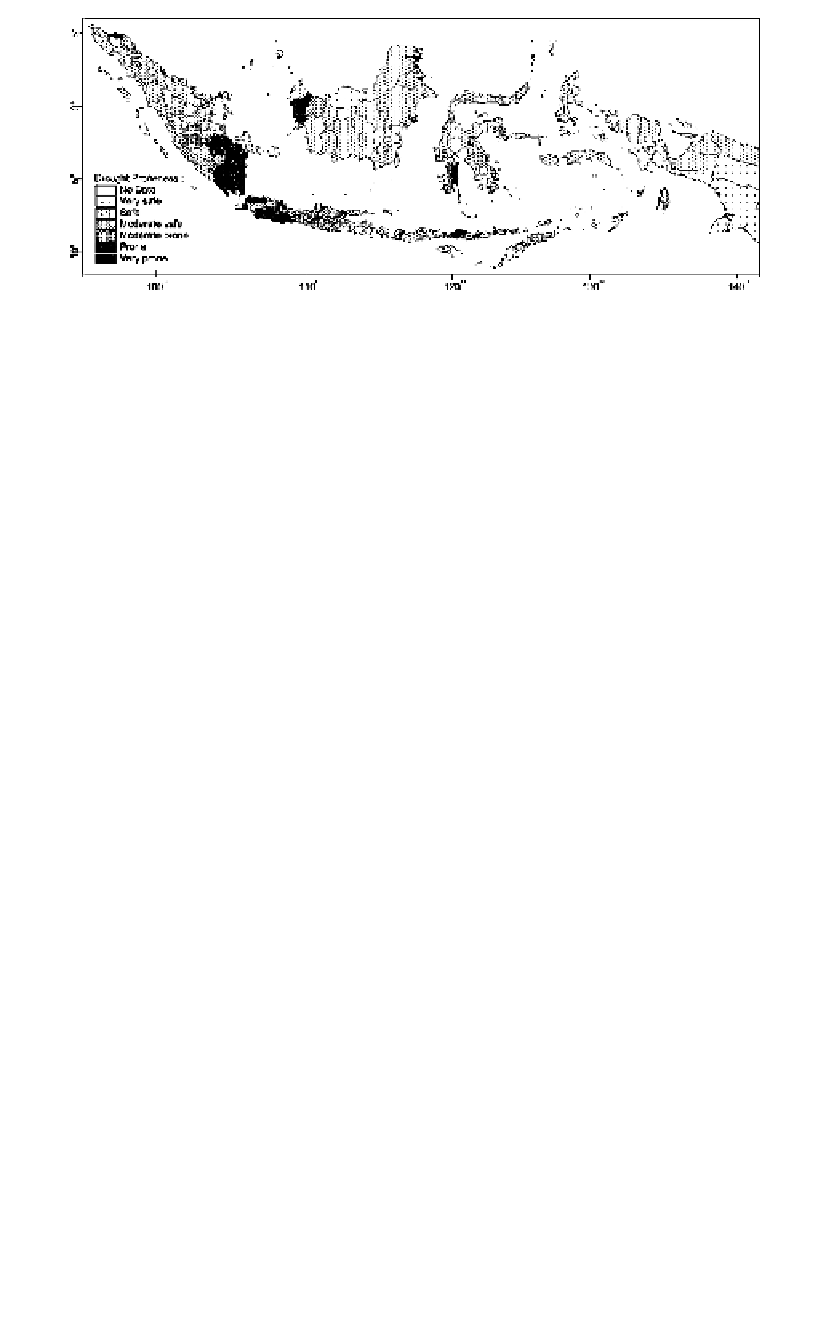Agriculture Reference
In-Depth Information
1
2
3
4
5
6
7
8
9
10
11
12
13
14
15
16
17
18
19
20
21
22
23
24
25
26
27
28
29
30
31
32
33
34
35
36
37
38
39
40
41
42
43
44
45
46
Fig
ure 26.2
Vulnerability of rice-growing area to drought by district (from Alimoeso et al.,
2002).
[339
planted under irrigation, but yield of crops may increase due to higher so-
lar radiation, and (5) production may be affected in the year following an
El Niño event because farmers have less money to spend on fertilizers or
insecticides.
Line
——
-0.5
——
Norm
* PgEn
D
rought Mitigation
Drought mitigation strategies include identifying and mapping drought-
prone areas by the Directorate of Plant Protection, improving stochas-
tic models of climate forecasting such as time-series regression techniques
(Dupe, 1999; Haryanto, 1999; Boer et al., 2000), relocation of irrigation
water to drought-affected areas, adopting short-duration crops, construct-
ing small water-harvesting structures, restoring old irrigation structures,
modernizing water pumping facilities, developing drought-resistant crops,
practicing mixed (cash and food crops) cropping (ADPC, 2000), and im-
proving soil and water conservation practices.
In Java and the eastern Indonesian region, during El Niño years farmers
are frequently misled by the initial rains. These rains tempt farmers to plant.
However, as the rains cease later, the crops usually die during dry spells.
Most farmers keep some seed reserves in case they are forced to plant for a
second time, during the wet season. Rarely do farmers have sufficient seed
reserves for a third attempt when there is little likelihood of crop success.
In most El Niño years, the incidences of misleading rains are noticeable. A
long-lead forecast could help farmers wait until regular rains set in. This
would also help in advising farmers not to resort to planting crops during
El Niño years (taking the misleading rains into account) but to wait for
suitable dates for planting appropriate crops.
The main problems in mitigating drought in Indonesia are poor skills
to forecast climate and unavailability of methods to transfer the regional
climate forecasts into local climate forecasts which can be easily inter-
preted by farmers. Policy-makers sometimes have wrong perceptions about
[339












































Search WWH ::

Custom Search